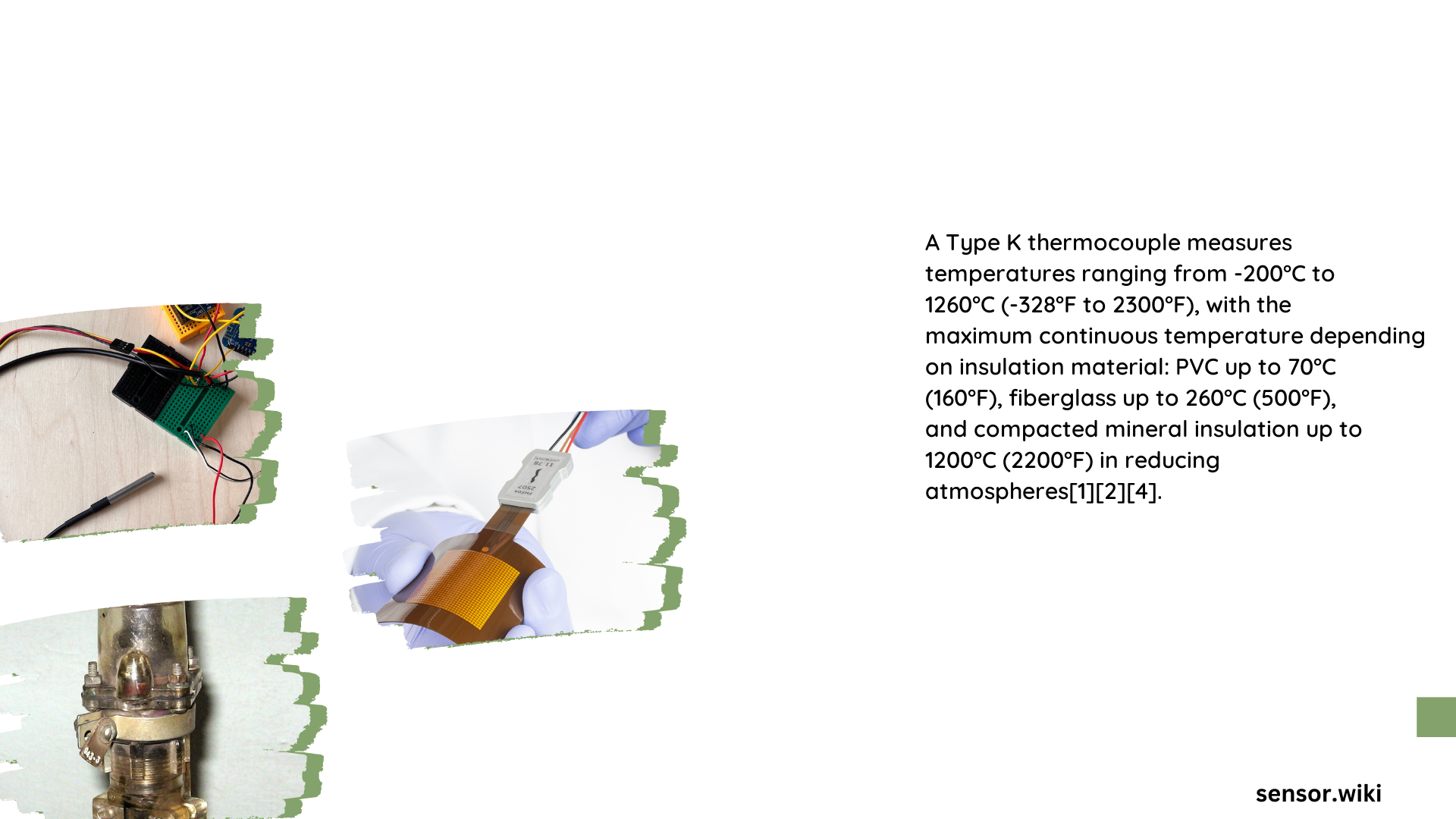Type K thermocouples represent a versatile temperature sensing technology capable of measuring temperatures across an extensive range from -200°C to 1260°C, making them critical instruments in numerous industrial, scientific, and commercial applications. These sensors leverage unique alloy compositions to provide reliable temperature measurements with remarkable precision and durability across diverse environmental conditions.
What Makes K Type Temperature Sensor Range Unique?
How Wide Are Temperature Measurement Capabilities?
K type temperature sensors offer an impressive operational range that sets them apart from other thermocouple technologies:
- Continuous Operation Range: 0°C to +1100°C
- Extended Range: -180°C to +1300°C
- Practical Measurement Limits: -200°C to 1260°C
Temperature Range Breakdown
| Temperature Zone | Characteristics | Performance |
|---|---|---|
| Cryogenic (-200°C to 0°C) | Specialized Materials Required | Limited Accuracy |
| Standard Operating (0°C to 1100°C) | Optimal Performance | High Precision |
| High-Temperature (1100°C to 1260°C) | Special Configurations Needed | Reduced Reliability |
What Factors Influence Measurement Accuracy?
Several critical factors determine the accuracy of K type temperature sensors:
- Tolerance Classifications
-
Class 1 Accuracy:
- -40 to +375°C: ±1.5°C
- 375 to 1000°C: ±0.004 * [temperature]°C
-
Environmental Considerations
- Magnetic field interference
- Oxidation potential
- Atmospheric composition
Where Are K Type Temperature Sensors Commonly Used?
K type temperature sensors find applications across multiple industries:
- Manufacturing Processes
- Furnace temperature monitoring
- Metal heat treatment
-
Welding temperature control
-
Food Processing
- Cooking equipment temperature regulation
-
Industrial food preparation
-
HVAC Systems
- Climate control monitoring
- Temperature sensing in heating/cooling infrastructure
What Technical Specifications Impact Performance?
Wire Gauge Limitations
Different wire gauges provide varying temperature measurement capabilities:
| Wire Gauge | Maximum Temperature | Typical Application |
|---|---|---|
| #8 AWG | 1280°C | Heavy Industrial |
| #14 AWG | 1090°C | Medium Industrial |
| #24 AWG | 870°C | Light Manufacturing |
| #30 AWG | 760°C | Precision Sensing |
What Are Potential Limitations?
K type temperature sensors have several inherent constraints:
- Electromagnetic Sensitivity
- Prone to interference around 185°C
-
Requires careful installation
-
Material Degradation
- Oxidation at high temperatures
- Reduced performance in extreme environments
How to Optimize K Type Temperature Sensor Performance?
Recommended best practices include:
- Select appropriate wire gauge
- Use proper installation techniques
- Consider environmental conditions
- Regular calibration
- Implement shielding for electromagnetic protection
Conclusion

K type temperature sensors offer remarkable versatility, providing comprehensive temperature measurement capabilities across an extensive range. Understanding their specifications, limitations, and optimal deployment strategies ensures accurate and reliable temperature sensing in diverse applications.
